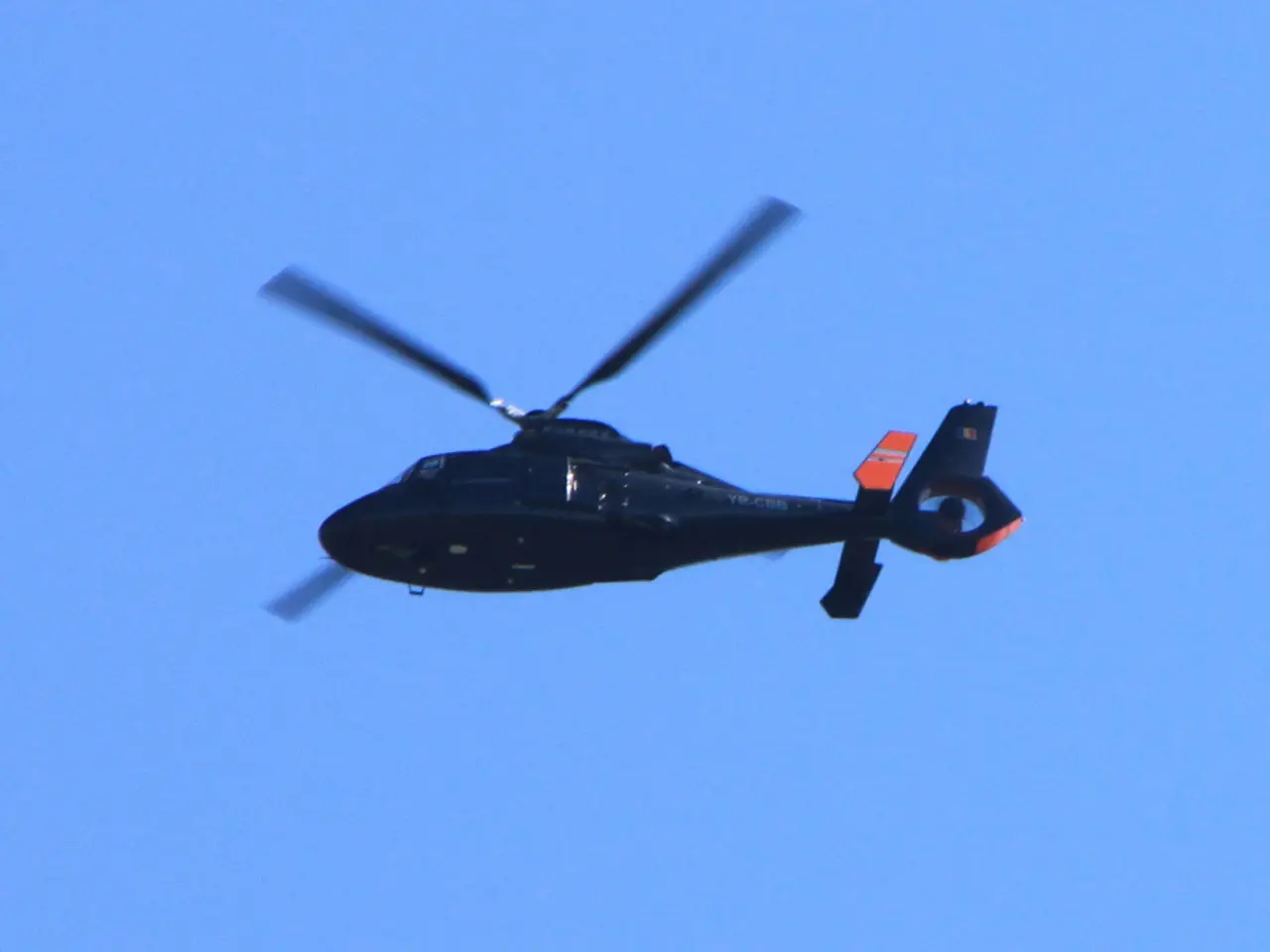Military helicopter in Washington crash had technical malfunctions, resulting in fatalities
The National Transportation Safety Board (NTSB) is currently examining a tragic mid-air collision that occurred on January 29, involving a US Army Sikorsky Black Hawk helicopter and a passenger plane, operated by a subsidiary of American Airlines, coming in to land at Reagan National Airport. The incident, which took place just a few miles from the White House, resulted in the loss of 67 lives.
The NTSB's chair, Jennifer Homendy, has expressed concern about the discrepancy in altimeter readings on the Sikorsky Black Hawk helicopter. According to investigations, the altimeter readings lowered significantly and remained lower throughout the flights, showing an 80- to 130-foot difference compared to the actual altitude. This discrepancy is significant because the helicopter’s barometric altimeter reportedly underread the actual altitude by this margin.
The older altimeter technology used in the helicopter, designed in the 1970s, lacks modern air data computers that provide more accurate altitude readings. Investigations have confirmed this issue by testing three other helicopters from the same unit, all showing similar altitude discrepancies.
This discrepancy likely contributed to the Black Hawk flying above the 200-foot altitude limit on its route along the Potomac River before colliding with the passenger plane. The significance lies in that pilots might have believed they were maintaining the correct assigned altitude, but the altimeter error caused them to fly higher than intended, increasing collision risk.
It is important to note that helicopters in the Potomac River area are required to stay below 200 feet. However, the Army and manufacturer Sikorsky were aware of this recurring altimeter discrepancy but had not formally documented or communicated it in pilot manuals. This lack of formal notification raised concerns about whether Army pilots had sufficient information to safely navigate controlled airspace.
Some Army officials and pilots testified that an 80 to 100-foot difference between altimeters was not alarming at low altitudes, as pilots rely more on radar altimeters and cross-reference multiple instruments below 500 feet. Army pilots also aim to maintain altitude within about 100 feet of target, so they argued they could still meet operational parameters despite altimeter errors.
However, a medevac operator emphasized that such imprecision would be unacceptable in his operations, especially where altitude limits are critical. The investigation is ongoing, with the NTSB holding hearings from Wednesday to Friday, questioning experts and various parties including regulators and air traffic controllers.
The Federal Aviation Agency air traffic control specialist, Clark Allen, testified that there was sufficient supervisory staff present in the control tower the night of the collision. The NTSB will issue a final report, but no single definitive cause has been identified yet.
This incident has raised concerns about the potential impact of altitude display discrepancies, including misleading pilots about their true altitude, contributing to a deadly mid-air collision; exposing systemic failures in communicating known equipment limitations; and prompting scrutiny over pilot reliance on outdated instruments and procedures.
[1] National Transportation Safety Board [2] Army Times [3] Washington Post [4] CNN
- The National Transportation Safety Board (NTSB) is investigating the mid-air collision, highlighting concerns about the discrepancy in altimeter readings on the Sikorsky Black Hawk helicopter, which was operated by the US Army.
- The older altimeter technology used in the helicopter, designed in the 1970s, has been criticized for lacking modern air data computers that provide more accurate altitude readings, as demonstrated by the NTSB's investigation.
- The incident has shed light on potential systemic failures in communicating known equipment limitations, as the Army and manufacturer Sikorsky were aware of the recurring altimeter discrepancy but had not formally documented or communicated it in pilot manuals.
- The ongoing investigation by the NTSB has prompted discussions in general-news and crime-and-justice sectors, focusing on the potential impacts of altitude display discrepancies on the safety of transportation, including aerospace and transportation industries, as well as political considerations surrounding air safety regulations.








